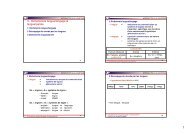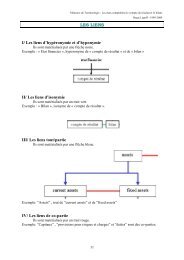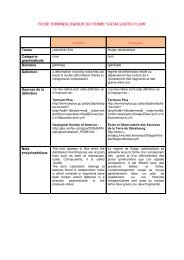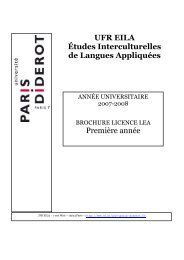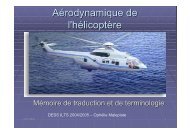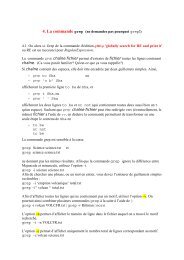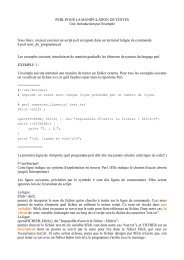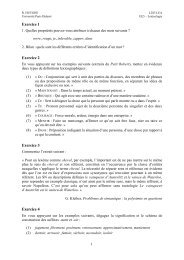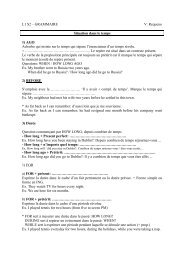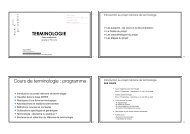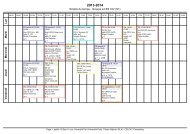INTRODUCTION TO ENGLISH TEXT LINGUISTICS
INTRODUCTION TO ENGLISH TEXT LINGUISTICS
INTRODUCTION TO ENGLISH TEXT LINGUISTICS
Create successful ePaper yourself
Turn your PDF publications into a flip-book with our unique Google optimized e-Paper software.
Professor Christopher Gledhill<br />
(Notes de cours, Linguistique du texte anglais, 48LGAN23, EILA, Université Paris Diderot)<br />
[1] The genome is made up of all the chromosomes, and by extension all of the genes, which<br />
make up an individual’s genetic heritage.<br />
Here are the five points you must cover in your text analysis:<br />
Q1 What linguistic features suggest that texts A and B are ‘specialised’ texts or examples of<br />
Language for Specific Purposes (LSP)? Illustrate your answer with examples from each text. (2pts)<br />
Q2 Find 5 underlined sequences in the French text and their equivalents in English (I have provided<br />
five examples in the text above). Comment on the differences between each translation pair, in<br />
terms of different levels of linguistic analysis set out in section 1 of this course: Context (i.e. style,<br />
register), Semantics, Syntax, Lexis, Morphology, etc. Briefly explain your choice of category (‘The<br />
difference between X and Y is semantic because...’ etc.) You may also comment on the process of<br />
translation involved. (8 pts)<br />
Q3 Analyse the English text in terms of Genre and Field, Mode, Tenor. At all stages of your analysis,<br />
you must justify your comments with examples from this text (10 pts).<br />
Q4 Analyse the English text in terms of Coherence and Cohesion. In particular, a) give the overall<br />
rhetorical structure of the text, stating the boundaries between each section (e.g. setting the<br />
scene, stating the problem, describing methods, evaluating results, etc.) and b) give at least 3<br />
examples of cohesive Reference, Substitution (if any), Ellipsis, (if any), Conjunction and Lexical<br />
cohesion (10 points).<br />
Q5 Look for five examples of Phraseological Units (PU) in the English and French texts. For each<br />
example state which type of PU is involved (idiom, proverb, bound or free collocation). Justify your<br />
choice in each case (‘This is a bound collocation because...’). Examples from the above: 1) blé dur,<br />
2) quand l’évolution fait bien les choses, 3) us et coutumes, 4) modifier en profondeur, 5) un<br />
évènement de polyploïdisation, 6) on the other hand, 7) the situation came about, 8) to undergo an<br />
event, 9) genetic heritage, 10 A new species was born. (10 pts).<br />
Please note that:<br />
• you must send the project to my email address as a .pdf file.<br />
• you must call the file YOURFAMILYNAME.YOURFIRSTNAME.pdf<br />
• your source text must be c. 300 words long (the translation should be of similar length)<br />
• your source and target text must be equivalent (i.e. one is a translation of the other in EN<br />
and FR)<br />
• your source and target text must be specialised (i.e. LSP, technical: see Topic 5)<br />
• your analysis must not exceed five pages<br />
• you must include a copy of the source and target texts in the same pdf file<br />
You can start working on the project now! I will set the deadline during the semester. Note that the<br />
project is worth 30% of the grade. It counts as the continuous assessment for this course. The<br />
examination, which takes place after the course is over, is the same format as this project (except<br />
35 / 37




